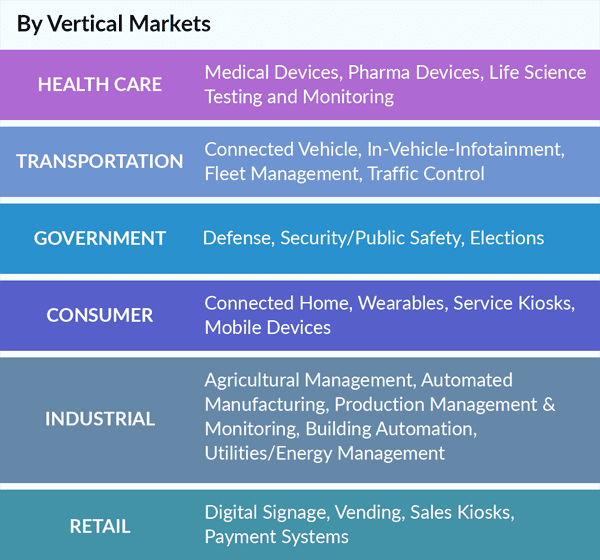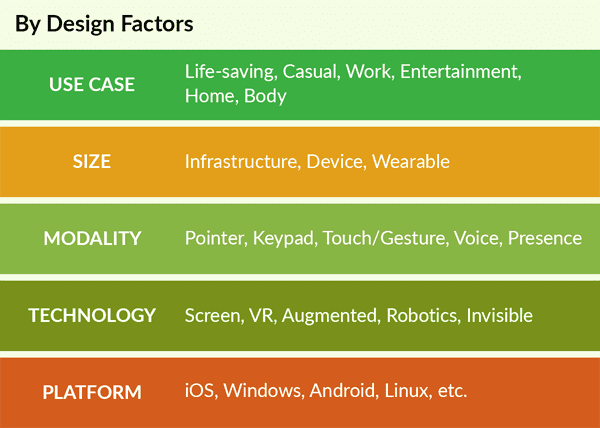
UX Design for IoT is a New Frontier
There’s one major reason why designing for embedded devices and the Internet of Things (IoT) is challenging: there are few common design aspects shared across devices. No similar operating system platform or interactive modality, for instance.
User experience design for embedded devices is a vast frontier because there is a very open landscape with only a few settlements that are quickly evolving.
Unlike designing for desktop computers or the web, anything from a growing family of possible technologies can be thrown at you, the designer. A device might feature physical buttons combined with a touchscreen. Or perhaps it has voice interaction. Even voice paired with touch interaction. Components may or may not exist for a particular platform. Performance is a wildcard as processors can vary greatly.
Most importantly, the context of use can vary greatly.
For example, designing a lifesaving medical device for emergency room use is a drastically different use context than designing an in-store retail kiosk for browsing products. In the case of the medical device, speed of use is crucial; the users are trained professionals; and the device likely needs to be portable, heavy duty, highly dependable and accurate.
For the in-store kiosk, the user can be anyone so attracting shoppers to try it out and remain engaged is a large part of the design. And in this case, it’s not just about screen design. Kiosk placement and size can make or break its popularity thereby affecting its value to a retailer.
While embedded design might be the Wild West, desktop and mobile design is more constrained by platforms and has a mature set of best practices.
The use cases for desktop and mobile are better understood so user research and testing typically focus strictly on the app. Many of the options in any possible desktop or mobile design are prescribed or constrained by the platform and hardware. The interaction modality is preset, usually to one primary modality. The screen sizes and resolutions are a limited set of options. The general performance range is defined. And premade components encourage fast, Lego-like app construction.
These limitations allow the designer to limit focus to the content of a specific app or website, concentrating on information architecture, flow and navigation (within the constraints of the platform components), layout (also within the constraints of the platform components), fonts (often prescribed by the platform), visual concept and colors, and generous user research and testing of the content itself.
Challenges of Designing Embedded Devices
Embedded devices often have little context of use knowledge about the physical device and the location or physical way that a user interacts with it. This means the designer has to think about the whole experience, hardware, software, location, size and content. What this suggests about embedded devices is that there is often some inventing going on -- new combinations of technology that create a unique user experience.
And, it suggests that designing for embedded devices is more challenging and more time consuming than for desktop or mobile. Embedded devices have historically leaned toward subpar user experiences. Today, that’s no longer acceptable. The Internet of Things is expected to be highly attractive and usable. How will that occur?
Experience and specialization.
Experience over time will help designers establish best practices and processes that work for ubiquitous computing. Also, as the IoT expands, designers will increasingly specialize in particular technologies or market verticals thereby limiting the variety of skills any one design team needs.
Here are two charts to help you get a better understanding of the scope of embedded design. The first lists the markets that new systems and devices may fall into, while the second lists the range of design factors that can be present in ubiquitous computing.


The Takeaway
Designing for the IoT is exciting because of the great number of unknowns that still exist. That means invention is highly valued in the design process to make ubiquitous computing both attractive and usable.
The challenge is to deliver the high-quality user experiences we’ve come to expect from our handheld and desktop computing devices, while also innovating with new technologies and novel use cases.
If you liked this article, explore more great UX design content.
